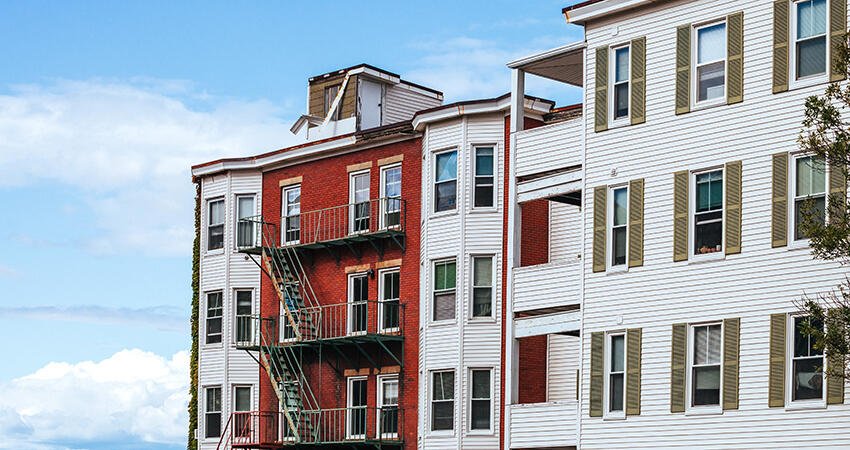
(peeterv/Getty Images)
Local Policies to Strengthen the Renter Safety Net
While many economists are seeing inflation cool across the country, renters are not yet seeing rent price relief. New data has shown that the rent-to-income ratio has reached 40 percent, and almost 70 percent of renters earn less than the US median income. Evictions are as much as 50 percent higher in some cities compared with before the pandemic, and in many ways, it feels as though any gains in renter stability achieved during the crisis have evaporated. Recognizing the dire situation many renters are facing, localities have turned to lessons learned during the COVID-19 pandemic about strengthening the renter safety net to develop permanent policies and programs to continue to support renters.
The renter safety net
The COVID-19 pandemic began a time of unprecedented renter instability but also ushered an unprecedented response. During the pandemic, many states and localities passed temporary, local protection for renters after the federal eviction moratorium ended to help keep families in their homes. Though almost all these pandemic-era eviction moratoria and emergency rental assistance programs have ended, some local governments are creating supportive policies of their own. Including “just cause” eviction, rent control, and right to counsel, these protections are already benefiting renters, and participating localities have distilled their lessons for other local leaders.
All these protections are important parts of a comprehensive support network for renters, which was critical during the pandemic and may have prevented millions of evictions.
Rental stabilization and assistance
Some of the most common policies directly address how increases in rental costs are putting more strain on families. Rent stabilization generally refers to regulations that limit how much rent can be increased at one time and between tenancies. It’s also often referred to as rent control, but control policies typically place a maximum cap on rent instead of a cap on annual increase. Recent research has shown that stabilization can slow displacement (PDF), particularly involuntary moves caused by rent increases. Local rent stabilization efforts are growing, but some are running into challenges with state laws that ban or preempt the regulation, creating larger challenges for these efforts.
On the other side, some communities are continuing to help renters pay rent. Thanks to the large-scale rental assistance during the pandemic and smaller-scale pilot programs, we now have more research to show the positive impacts of emergency rental assistance (ERA). Households receiving support are less likely to report housing instability, unaffordability and low-quality housing (PDF) and saw benefits to their financial well-being and mental health (PDF). ERA was also helpful for renters in subsidized housing, who often have higher rates of nonpayment because of lower, more-inconsistent income.
“Just cause” eviction
Localities have passed legislation to prevent the unreasonable displacement and eviction of renters at the end of lease terms. “Just cause” or “good cause” eviction legislation specifies the grounds upon which an eviction may be filed or lease may not be renewed. The exact specifics vary by locality, but generally, they restrict reasoning to substantial lease violations, such as failure to pay rent or to follow rules outlined in the lease. This legislation also often provides exceptions for property owners who permanently remove the unit from the housing market (PDF) or use it to house immediate family members—though in these cases, the law may stipulate that owners help pay relocation or other costs.
Since 2020, at least 19 states and cities have proposed this type of legislation. We have yet to see a strong body of research that examines the policies’ impacts, in part because many of them have only been in place for a few years and data on informal evictions has been historically difficult to capture, although that is changing. A 2019 study presents some evidence that “just cause” ordinances may have reduced evictions and eviction filings but only in some of the markets studied. Another study from 2022 (PDF) found these protections can help keep extremely low–income households in gentrifying neighborhoods.
Right to counsel
Other policies seek to create legal protections for renters that address what many see as a power imbalance between renters and landlords in legal proceedings; more than 80 percent landlords have legal representation in court, yet only 4 percent of tenants do (PDF). Right to counsel, which grants renters the right to have a lawyer in eviction proceedings, has been shown to effectively reduce evictions (PDF).
Localities that have passed this protection use a variety of funding sources, including taxes on rental properties and abandoned properties, developer fees, and even sheriffs’ budgets. The Biden administration has also urged local governments to utilize remaining funding from ERA and American Rescue Plan State and Local Fiscal Recovery Funds to launch right-to-counsel programs. Funding is critical to these programs, but so is the availability of lawyers. Many programs have been affected by staffing and capacity issues that reduce the number of tenants who can be served.
These policies are important pieces of a comprehensive renter safety net, which is more critical than ever as families face increased rents and other costs that threaten their stability.


